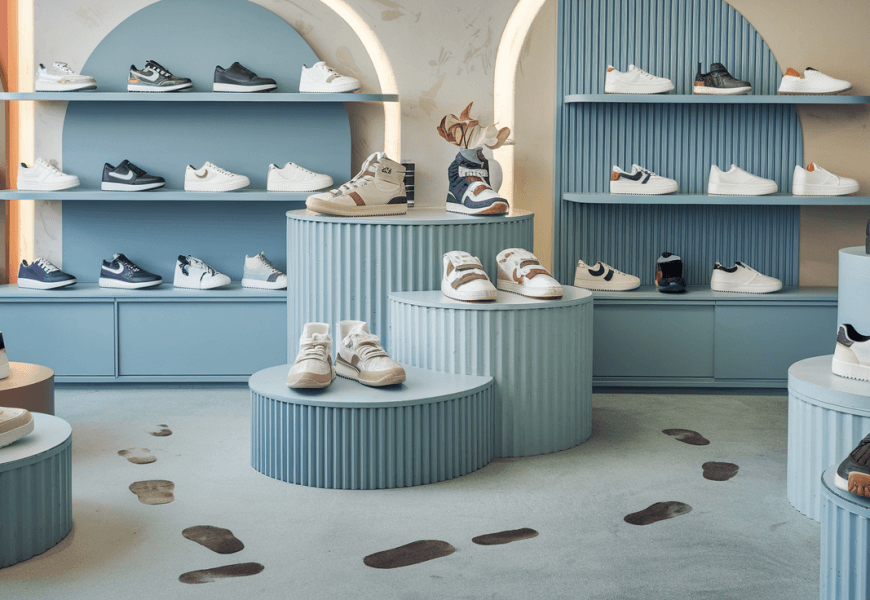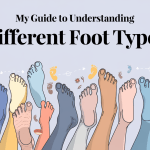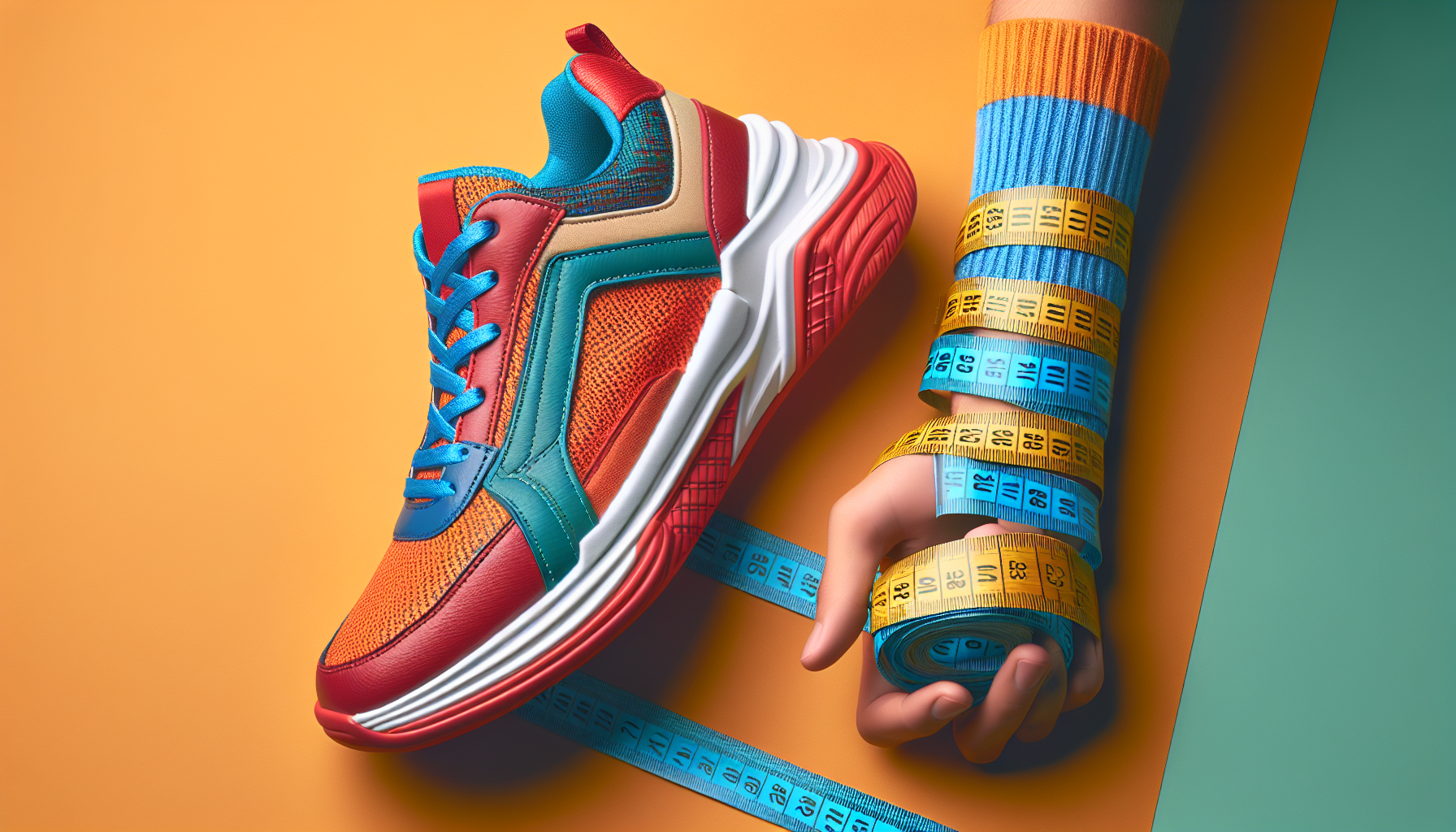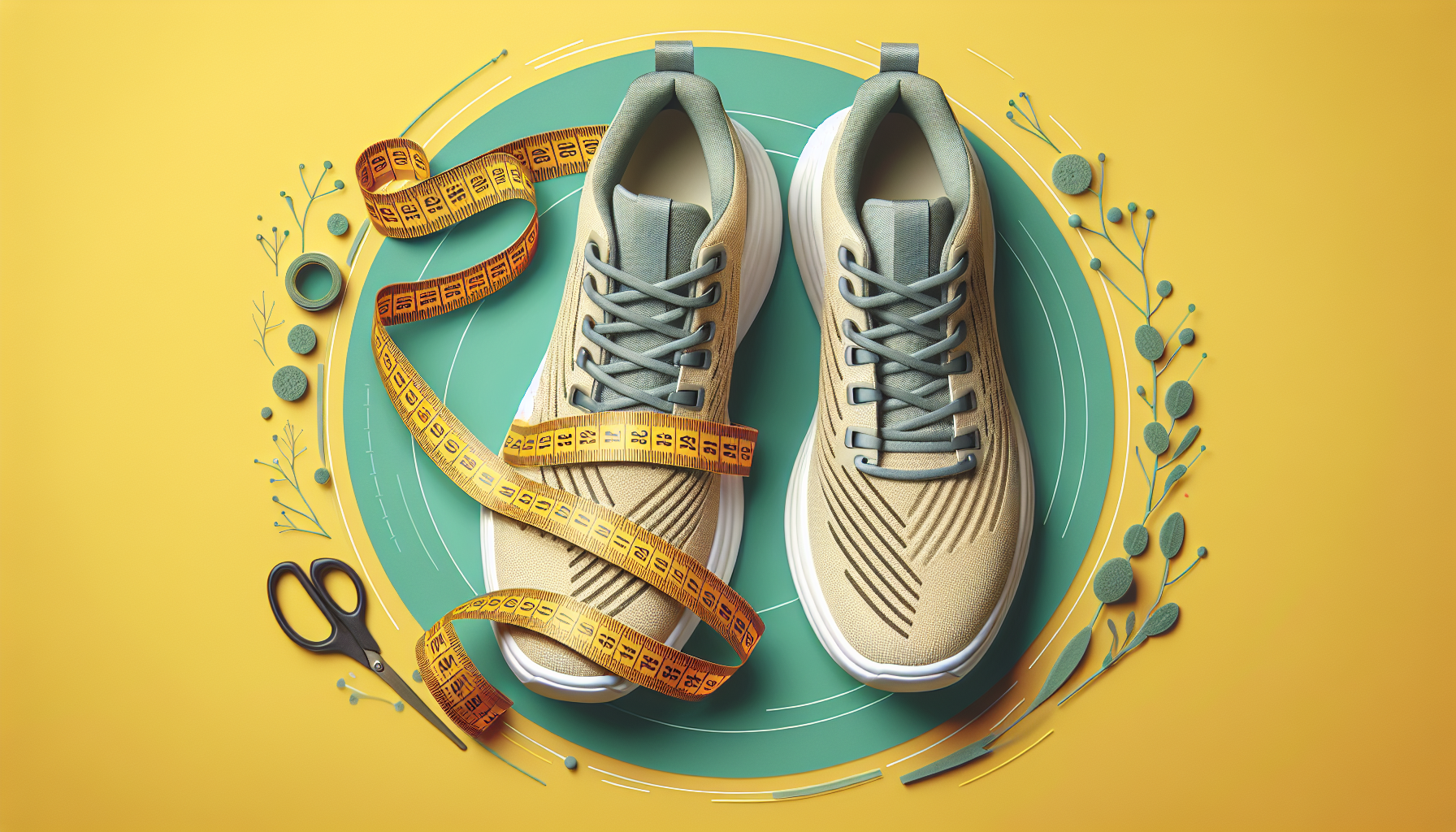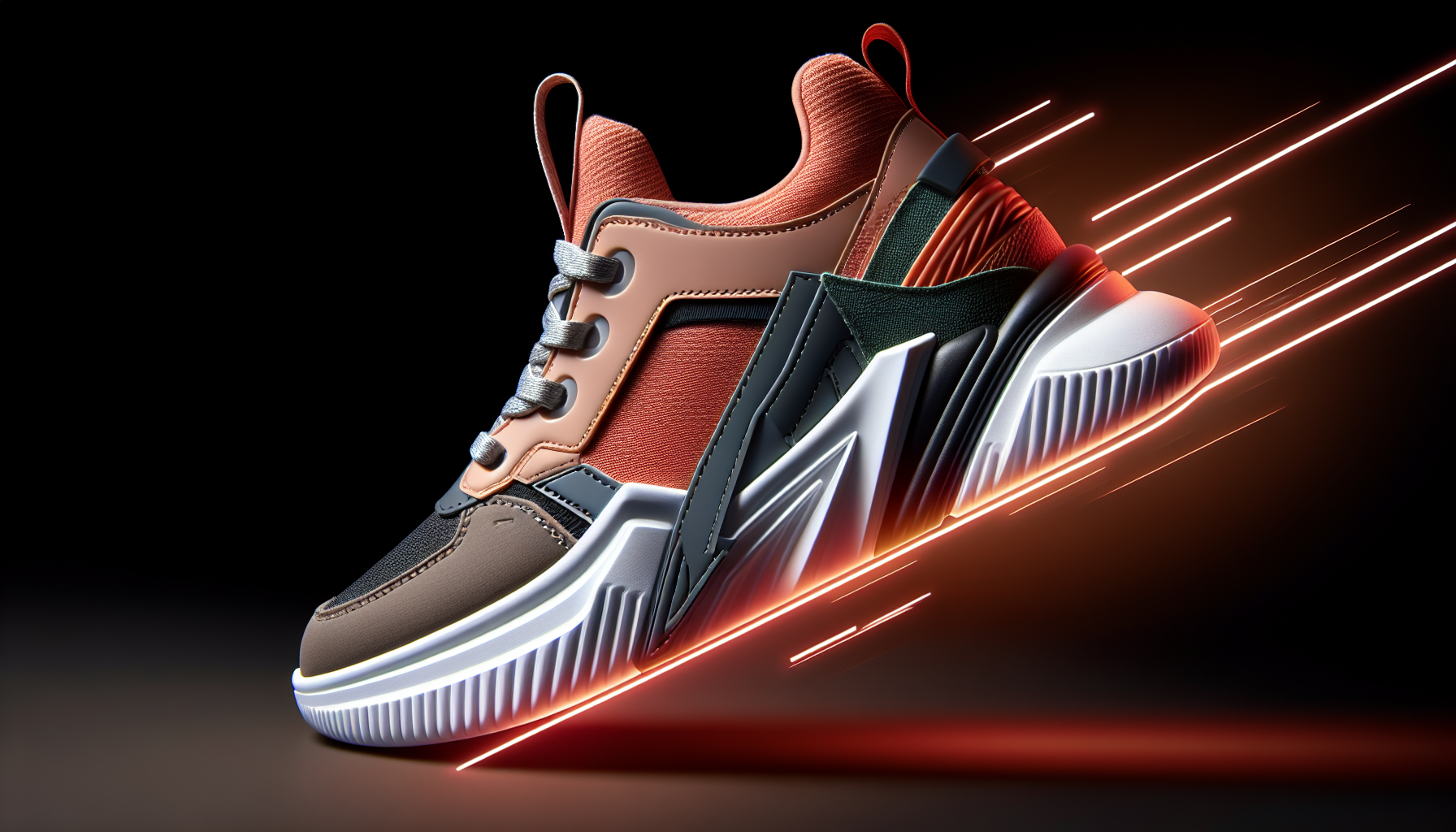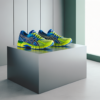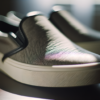Understanding Foot Types
Impact of Foot Shape on Sneaker Fit
Getting the right sneaker game means knowing your foot shape, especially if plantar fasciitis has ever made you feel like you’re walking on hot coals. Your comfort and foot mojo can totally depend on your kicks, so figure out if you’re a high arches, flat feet, or got that Goldilocks neutral foot type. Your foot shape says it all about the support and cushioning you need.
The nitty-gritty of sneaker fit is all about your arches, width, and length. So, let’s see how these shapes play the shoe game:
| Foot Shape | Characteristics | Recommended Features |
|---|---|---|
| High Arches | Elevated midfoot, underpronation | Enhanced arch support, cushioned insoles |
| Flat Feet | Low or no arch, overpronation | Structured support, motion control features |
| Neutral | Standard arch height | Flexible and supportive fit |
High Arches
If you’ve got high arches, you’re in the tall club with an elevated midfoot. This means you underpronate—fancy word for putting too much pressure on your heel and the ball of your foot. Sneakers with killer arch support and cushiony insoles? They’re your BFFs, spreading out your weight so it’s not all heel-and-toe pain.
Flat Feet
Flat feet often lead to overpronation—when your foot likes to lean way inside. For you, it’s all about those sneakers that keep you grounded with structured support and motion-control magic, so your feet stay in line and you can rock that stability.
- When scouting for sneakers that love flat feet, go for those with strong heel counters and a stable base. You’ll thank me later.
Neutral Foot Type
Got neutral arches? Lucky you. You need just the right mix of flex and support in your kicks. Sneakers that know how to balance cushioning and support fit the bill just right for you.
Getting a grip on your foot shape and how it ties into your sneaker style can make shoe shopping less of a pain. And ditto for easing any plantar fasciitis nastiness. For more scoop on what the foot docs say about the best shoes for plantar fasciitis, or if you need sneakers for wide feet, take a peek at our other foot-friendly tips.
Sneaker Features for Plantar Fasciitis
When you’re on the hunt for sneakers that can ease the foot pain known as plantar fasciitis, let’s zoom in on those shoe tricks that give your feet that much-needed cuddle.
Importance of Heel Height
Ah, heel height! It’s more than just a style statement. If you’ve been feeling like you’re stomping on Lego bricks all day, check your heel height. According to a study from the folks at NCBI, wearing shoes with a teeny bit of heel—say, between about 0.5-4 cm—could be the superhero your feet were praying for. It’s kinda like giving your heel a little pillow, reducing that notorious heel pain.
| Heel Height | Pain Level |
|---|---|
| No heel height | High |
| 0.5-4 cm | Low |
Consideration for Arch Support
Arch support is like having a BFF for your feet. They really help you stay in line and keep things from rolling out of control—literally. A shoe that hugs your arches firmly can be a game changer, especially if you’ve got plantar fasciitis creeping up on you. Deep heel cups and those snazzy stability things play a big role in keeping your feet happy, according to the experts at Verywell Health.
Key Features for Arch Support:
- Firm Arch Support
- Deep Heel Cups
- Stability Features
Benefits of Cushioned Insoles
Ever wished your feet had their own little comfy cloud to walk on? Enter cushioned insoles. These beauties are like shock absorbers for your shoes, taking pressure off your sore plantar fascia. A pair of kicks that come with a cushioned midsole and a supportive heel counter can work magic, spreading out the pressure nicely. If you trust those Podiatrists’ guides (and you should), cushy insoles with the right arch support can really kick that foot pain to the curb.
| Insole Type | Benefit |
|---|---|
| Cushioned Midsole | Shock Absorption |
| Supportive Heel Counter | Pressure Distribution |
Bringing these features into your sneaker shopping spree could seriously boost your plantar fasciitis game. And hey, if you’re juggling flat feet or your tootsies need a little extra room, you might wanna peek at sneakers designed just for that. Your feet will thank you later!
Best Sneakers for Plantar Fasciitis
Picking the right sneakers when battling plantar fasciitis can bring much-needed comfort and relief. Here’s my handpicked selection that gives you great support, cushioning, and stability while keeping foot pain at bay.
Dr. Scholl’s Feel Nice Lace Up Sneaker
If you’re dealing with plantar fasciitis pain, Dr. Scholl’s Women’s Feel Nice Lace Up Sneaker is crafted with you in mind. They come with shock-absorbing arch support and a firm heel cup to help keep your feet in line. Perfect for when you’re running from work to errands or just having a leisurely walk. Do keep in mind they’re not quite built for high-energy workouts.
| Feature | Description |
|---|---|
| Arch Support | Shock-absorbing |
| Heel Cup | Firm |
| Suitable for | Working, walking, errands |
| Not ideal for | Intense exercise |
Dive into our guide on different foot types for more sneaker insights.
Kizik Wasatch Sneakers
The Kizik Women’s Wasatch Sneakers are like a reliable friend you can count on, rain or shine. With a stabilizing heel cup and a midsole that’s both cushy but firm, your feet will feel the love. They’re just what you need for daily adventures without stirring up plantar fasciitis pain.
| Feature | Description |
|---|---|
| Heel Cup | Stabilizing |
| Midsole | Cushioned yet firm |
| Suitable for | Everyday wear |
| Special Feature | Water-resistant |
Get familiar with our choices for more specific foot concerns, like the sneakers for flat feet.
Mizuno Wave Inspire 19
If you’re always on your feet, the Mizuno Wave Inspire 19 sneakers have got your back—or should I say, feet. With narrow heel support, roomy toes for wiggling, and beefed-up arch support, they’re a sanctuary for those with both plantar fasciitis and flat feet. Expect top-notch shock absorption for long standing or walking spells.
| Feature | Description |
|---|---|
| Heel Support | Narrow |
| Toe Box | Extra room |
| Arch Support | Extra |
| Suitable for | Long periods of walking/standing |
Find more on getting the right shoe fit by visiting our piece on the best sneakers for wide feet.
Kuru Ridge Motion Hiking Shoe
For those who love the great outdoors, the Kuru Ridge Motion Hiking Shoe brings springy comfort and a snug, sure-footed fit. Tackle varied terrains while these shoes work to ease fatigue and keep plantar fasciitis at bay.
| Feature | Description |
|---|---|
| Cushioning | Springy |
| Fit | Snug and secure |
| Suitable for | Walking, hiking |
| Terrain | Various |
All these sneakers come with distinctive features that tackle pain associated with plantar fasciitis. Pay attention to key details like the arch support, heel stability, and overall cushioning. Finding the right pair isn’t just about comfort—it’s about stepping into a healthier, more active future with happy feet.
Evolution of Footwear Design
Getting a grip on how shoes have changed over the years can really help when picking the right sneakers for plantar fasciitis.
Historical Trends in Shoe Design
Shoe styles have danced around quite a bit in the last half a century. We’ve seen them move from simple, less cushioned designs to ones that offer more support and comfort. Thanks to a little thing called “progress,” we’ve got running shoes of every sort now—like cushioned, stability, and minimalist types (Dr Rajiv Desai).
Minimalist shoes became a hit with their barely-there padding and low heels, all set to imitate barefoot running and encourage natural motion. But their moment in the sun was brief. Folks started craving the coziness and steadiness of shoes with more padding and support.
| Shoe Type | Key Characteristics | Popular Era |
|---|---|---|
| Minimalist Shoes | Low padding, low heels | Early 2000s |
| Stability Shoes | Added support, firm midsoles | Late 1990s-2000s |
| Cushioned Shoes | High padding, shock absorption | 2010s-Present |
The way shoe design has shifted hints at how it’s tried to keep pace with what folks need and want, especially those dealing with foot pains like plantar fasciitis.
Misconceptions in Footwear Choices
Shoe shops seem to be bursting at the seams with tall tales, leading people to pick shoes that don’t do them any favors and sometimes cause foot headaches. A whopper of a myth is thinking your shoes have to be ultra-supportive to save your feet from splaying all over. The truth is, shoes should offer enough support while letting your feet move naturally.
Then there’s the old yarn about shoes being uncomfortable till they’re “broken in.” It’s seen many suffer needlessly, sometimes causing long-term foot issues (Dr Rajiv Desai).
Check out these common misunderstandings:
- Shoes should ache at first: Nope, they should feel good right away.
- More support is better: It’s not a one-size-fits-all. Different feet need different support.
- Fashion over fit: Choosing looks over comfort can bring on major foot problems.
It’s important to bust these myths for the sake of picking the right sneakers. A good fit and the right features really matter because they affect your foot health directly. For more check our guides on sneakers for flat feet or the best sneakers for wide feet.
By grasping these trends from the past and clearing up common misunderstandings, young women have a leg up on choosing fashionable, supportive sneakers that suit their foot shape and needs.
Selecting the Right Sneakers
Picking the right kicks can literally be a lifesaver—well, for your feet at least—when you’re dealing with plantar fasciitis. Get the shoes just right, and you might find your foot pain eases up a bit. Let’s sift through some practical tips to help you lace up the perfect sneakers.
Australian Podiatry Association Recommendations
The Australian Podiatry Association isn’t just talking nonsense when they highlight the essentials in shoe-shopping for plantar fasciitis relief:
- Length and Width: Make sure you ain’t squishing your toes or swimming in your sneakers.
- Heel: Keep it low and wide for a sturdy, no-wobble step.
- Firm Fastening: Your foot should feel snug and secure.
- Toe Box: Round and roomy is the name of the game, so there’s plenty of breathing space.
- Shape: Don’t force your foot into a shape it didn’t come in. Match the shoe’s shape to your foot’s natural contours.
| Feature | Recommended Specification |
|---|---|
| Heel Height | Low and broad |
| Toe Box | Spacious and round |
| Fastening | Firm around the instep |
| Length and Width | Matches individual foot size |
Importance of Shoe Fit and Features
Trust me, the fit is everything when you’re sneaker shopping for plantar fasciitis. Shoes that are a bad match can be a real pain, literally. Features you should scout before swiping that card include:
- Arch Support: Solid arch support can make a world of difference. Insoles like the Superfeet All-Purpose Support High Arch provide stellar support.
- Cushioned Insoles: Cushioning isn’t just a luxury, it’s your foot’s best friend for cutting down heel stress. Check out the Sole Active Medium insoles for some nice, soft landings.
- Heel-to-Toe Drop: The zero-drop style lets your foot relax into a natural alignment.
Impact of Footwear on Foot Health
Want to keep those feet happy for the long haul? Just ask Dr Rajiv Desai—we walk about 75,000 miles over a lifetime on average. Right shoes can dodge that nagging foot pain and keep your body’s machinery humming smoothly. Bad shoes, like those skyscraper heels, can mess with your posture, twist an ankle, and even wear out your muscles.
Snag the right sneakers, especially if plantar fasciitis is a word you know too well, and you’re looking at a boost in your overall health and enjoyment of life. If you’re curious about foot types, peek over here to find the best sneakers for flat feet to match your needs. And if wide feet are your thing, this guide’s got your back with more suggestions!
Top Walking Shoes for Plantar Fasciitis
Getting the right shoes when you’ve got plantar fasciitis is key to getting through the day without wincing at every step. Let me paint you a picture of some top kicks that combine comfort, support, and a little bit of style for your ailing feet.
Brooks Adrenaline GTS 23
Imagine stepping into the Brooks Adrenaline GTS 23. Stability and support? It’s got you covered. Here’s what you’re getting:
- Heel Size: 35 mm
- Toe Size: 23 mm
- Arch Support: GuideRails to keep you steady
- Cushioning: Softer midsole for those sneaky sidewalk bumps
| Feature | Value |
|---|---|
| Heel Size | 35 mm |
| Toe Size | 23 mm |
| Arch Support | GuideRails |
| Cushioning | Top-notch |
Brooks Glycerin GTS 21
The Brooks Glycerin GTS 21 – think of it as walking on marshmallows, but better.
- Heel Size: 31 mm
- Toe Size: 21 mm
- Arch Support: You guessed it, GuideRails!
- Cushioning: Soft, soft, soft
| Feature | Value |
|---|---|
| Heel Size | 31 mm |
| Toe Size | 21 mm |
| Arch Support | GuideRails |
| Cushioning | The comfiest |
Brooks Addiction Walker 2
If you’re strolling from dawn till dusk, Brooks Addiction Walker 2 is your trusty sidekick.
- Heel Size: 38 mm
- Toe Size: 26 mm
- Arch Support: Solid, like a good friend
- Cushioning: BioMoGo DNA for a snuggly fit
| Feature | Value |
|---|---|
| Heel Size | 38 mm |
| Toe Size | 26 mm |
| Arch Support | Firm as a rock |
| Cushioning | BioMoGo DNA |
Hoka Arahi 7
Hoka Arahi 7 – it’s the featherweight champ, protecting your foot while feeling almost weightless.
- Heel Size: 32 mm
- Toe Size: 24 mm
- Arch Support: Just enough
- Cushioning: Think of a bed of clouds
| Feature | Value |
|---|---|
| Heel Size | 32 mm |
| Toe Size | 24 mm |
| Arch Support | Moderate |
| Cushioning | Cloud-like |
Hoka Bondi SR
Ready to grip the ground like a pro? Hoka Bondi SR has got that non-slip magic with cushioning to boot.
- Heel Size: 40 mm
- Toe Size: 30 mm
- Arch Support: Amps up the support
- Cushioning: Thick layer of cozy
| Feature | Value |
|---|---|
| Heel Size | 40 mm |
| Toe Size | 30 mm |
| Arch Support | Enhanced power-up |
| Cushioning | Plush wonderland |
According to RunRepeat, shoes like the Brooks Glycerin GTS 21 are champs in cushioning and support, essentials for anyone battling plantar fasciitis pain. Grab shoes with solid arch support and deep heel cups, they’re like a hand-holding buddy for your feet (Verywell Health). Curious about how your feet shape shoes’ fit? Check different foot types.

